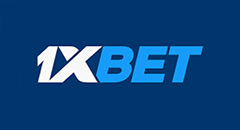| 1xbet Bonus 2025 | ||

|
Promo Code: 1x_1842263 | |
What are Spread bets? the basics to bet smarter
What is a Spread Bet?
 Spread betting is one of the most popular and thrilling ways to bet on sports, especially in major leagues like the NFL, NBA, and even soccer. Unlike simple moneyline bets where you pick a winner, spread betting focuses on how much a team will win or lose by.
Spread betting is one of the most popular and thrilling ways to bet on sports, especially in major leagues like the NFL, NBA, and even soccer. Unlike simple moneyline bets where you pick a winner, spread betting focuses on how much a team will win or lose by.
Think of it like this: Instead of just betting on whether your team wins or loses, you’re betting on the margin by which they win or lose. This adds an extra layer of excitement and strategy to your bets. Spread betting levels the playing field by giving both the favorite and the underdog a chance to win your bet, depending on the margin of victory.
Example of Spread Betting
Let’s break it down with a real example from a football game between the Dallas Cowboys and the New York Giants.
Let’s say the spread looks like this:
| Team | Spread | Probability (approx.) |
|---|---|---|
| Dallas Cowboys | -6.5 | 61.2% |
| New York Giants | +6.5 | 38.8% |
If you bet on the Cowboys (the favorite), they need to win by 7 points or more for your bet to win. If the Cowboys win by exactly 6 points or fewer, or if the Giants win, your bet loses.
Conversely, if you bet on the Giants (the underdog), they can either win the game or lose by 6 points or fewer for your bet to win.
Why Choose Spread Betting?
Spread betting makes a game more exciting, especially in matchups where there’s a clear favorite. In games where one team is heavily favored, betting on the spread makes the game more interesting, as you’re not just betting on the winner but how dominant that victory will be.
-
Leveled Playing Field: With the spread, a blowout is not the only way to win. Even if your underdog team doesn’t win, they can still cover the spread by keeping the game close.
-
Increased Engagement: Spread betting makes every play matter. You’re not just watching for your team to win; you’re watching for the team to perform against the spread.
How to win big with Spread betting: top tips and strategies for success
How to Read a Point Spread
When reading a point spread, you’re essentially looking at the handicap that oddsmakers set to make both teams equally attractive to bettors. This spread gives the underdog a boost and the favorite a disadvantage. For example, in a football game:
-
Dallas Cowboys -6.5
-
New York Giants +6.5
The Cowboys, as the favorite, must win by at least 7 points for you to win your bet. If you bet on the underdog, the Giants must either win or lose by 6 points or fewer for your bet to win.
The Handicap
The handicap (the point spread) is used to level the playing field. Oddsmakers give an advantage to the underdog and a disadvantage to the favorite. This creates excitement in betting, especially in games where the talent difference is obvious.
The Favorite
The favorite is the team expected to win. Their line will have a negative number (e.g., -6.5), meaning they need to win by more than the spread for the bet to pay off. The favorite is seen as stronger, but the spread makes the bet more fair and engaging.
The Underdog
The underdog is the team expected to lose. Their line will have a positive number (e.g., +6.5). This means they can either win outright or lose by fewer than the spread to cover the bet. Betting on the underdog offers higher risk, but also potential rewards.
The Vig
The vig (or vigorish) is the commission that sportsbooks charge for taking your bet, usually expressed as -110 on either side of the spread. This means you have to bet $110 to win $100. The vig ensures the sportsbook makes money regardless of the outcome.
Covering the Spread
“Covering the spread” means that the team you bet on performed as expected relative to the point spread. If you bet on the Cowboys (favored -6.5) and they win by 7 or more points, they’ve “covered the spread.” If they win by less than 7, they didn’t.
How to Bet Against the Point Spread
To bet against the point spread, you’d select the underdog (e.g., the Giants in the example above). If you believe the underdog will perform better than expected, you’re betting that they will either win outright or lose by fewer points than the spread indicates.
Which Team Will Cover the Spread?
When deciding which team will cover the spread, you analyze factors like team performance, injuries, weather conditions, and recent trends. If the favorite has been struggling or the underdog has been playing above expectations, you might decide to bet on the underdog.
What Does -110 Mean?
The -110 line means that for every $110 you bet, you can win $100 in profit. This is standard for point spread bets. It’s a way to ensure the sportsbook makes a profit regardless of the outcome of the game. It also means you need to wager slightly more to win the same amount.
How Much Can I Win?
To calculate your potential winnings, multiply your bet amount by the odds. For example, if you bet $110 on a -6.5 spread and the team wins by enough points, you win $100 in profit, plus your original $110 back. So, your total return is $210.
Point Spread Betting in Baseball
In baseball, the point spread is often called a run line. It’s usually set at -1.5 runs for the favorite and +1.5 runs for the underdog. If you bet on the favorite (e.g., Yankees -1.5), they must win by 2 or more runs. If you bet on the underdog (e.g., Marlins +1.5), they can either win or lose by 1 run for your bet to win.
Point Spread Betting in Hockey
In hockey, point spread betting works similarly to baseball’s run line. The favorite will usually be listed with a -1.5 spread. If you bet on the favorite, they need to win by 2 goals for you to win your bet. The underdog will be listed with a +1.5 spread, meaning they can lose by 1 goal or win outright to cover the spread.
How to Bet on Spread?
Now that you know the basics, how do you start betting? Here’s a simple step-by-step guide to place a spread bet:
-
Choose a Sport: Spread betting is popular in sports like NFL football, NBA basketball, and soccer.
-
Look for the Spread: The spread will usually be listed next to the matchup. Look for the points that teams are favored or underdogs by.
-
Place Your Bet: Choose your team based on whether you think they’ll cover the spread. If you believe the favorite will win by more than the spread, bet on them. If you think the underdog will either win or lose by fewer points, bet on them.
Spread Betting explained: the key to making your sports bets more exciting!
Tips for Successful Spread Betting
-
Understand the Team’s Performance: Do your research before betting. If a team has been playing poorly or has key injuries, they might struggle to cover the spread even if they are favored.
-
Check the Line Movement: Pay attention to how the spread moves as the game approaches. If a team’s spread changes significantly, it could indicate something important, such as an injury or key player change.
-
Bet Responsibly: Always stay within your budget. Spread betting, like any other form of gambling, should be fun, not a financial burden.
Advanced Strategies for Spread Betting
For experienced bettors, here are some advanced strategies to maximize your spread betting success:
-
Contrarian Betting: This strategy involves betting against the public consensus. If a large majority is betting on one team, the spread can shift in favor of the other team. Smart contrarian bettors often find value in these shifted lines.
-
Teasers: In some sports, you can adjust the spread to your favor in a teaser bet. This can help make the bet more appealing but usually comes with lower odds.
The Rise of Live Spread Betting
With the growth of in-play betting, spread bets can now be placed during the game. As the momentum of the game shifts, so do the odds. Live spread betting allows you to place wagers as the action unfolds. This is especially popular in fast-paced sports like basketball and soccer, where scores can change rapidly.
For example, in a basketball game, if a team starts strong and the spread starts to widen, you can place a bet mid-game, potentially locking in favorable odds before a comeback occurs.
FAQ: Common Questions About Spread Betting
Frequently ask question
- Is 1xBet Safe for Online Betting?
- How to Bet on Live Football in 1xBet: A Quick Guide for Newbies
- How Do I Withdraw Money from 1xBet Without Fees?
- What is the best way to deposit money in 1xBet?
- Single Bets: Smarter Way Win More and Lose Less in Sports Betting
- The Maria Staking Plan: Smart Bankroll for Profitable Betting
- What Is Reverse Line Movement in Sports Betting?
- Why Do Betting Lines Move? Secrets the Sportsbooks Don’t Want You to Know
- Chasing Steam in Sports Betting: What It Means and How to Profit
- Futures Betting Explained: Big Wins, Big Risks, and Smart Strategies
